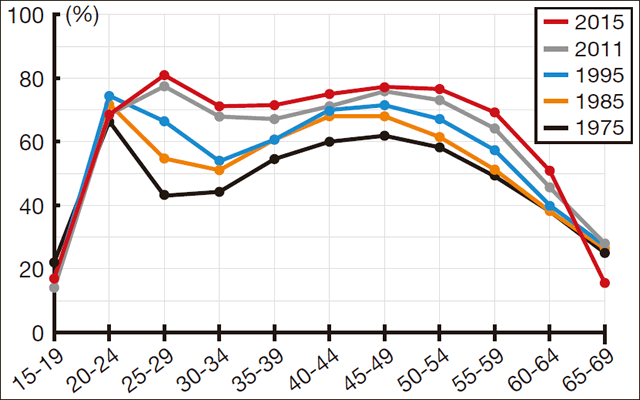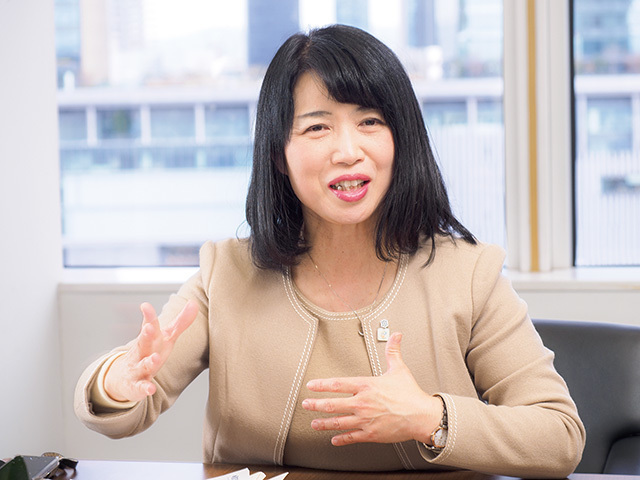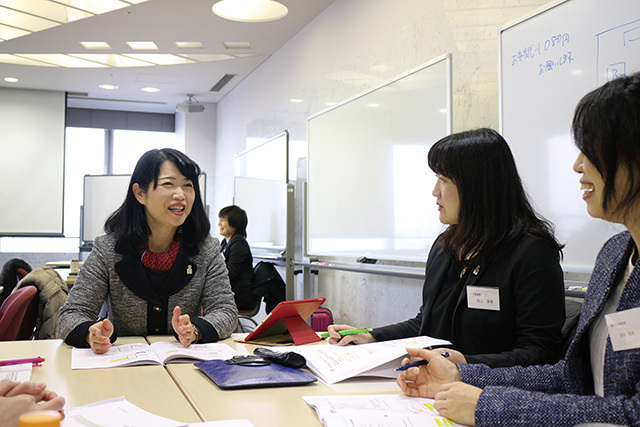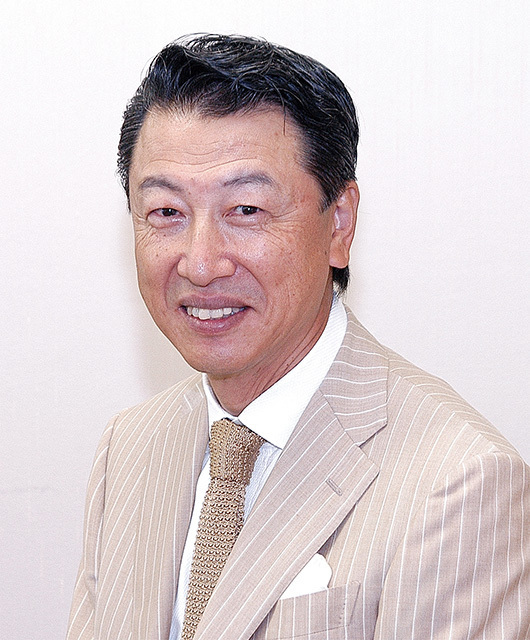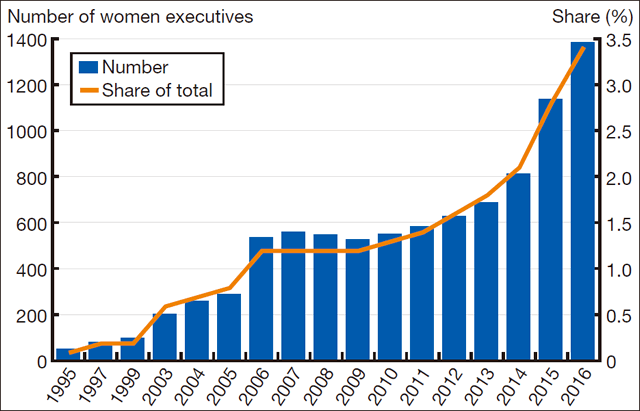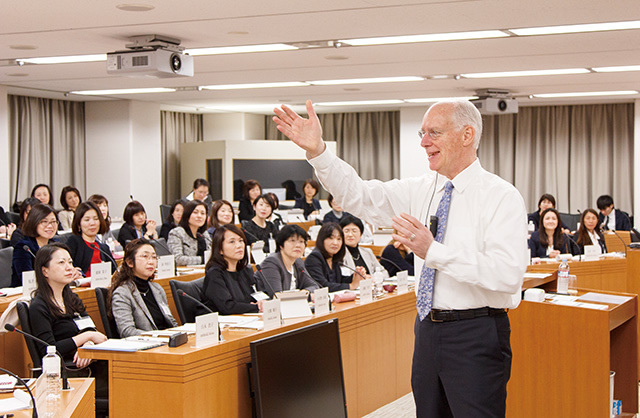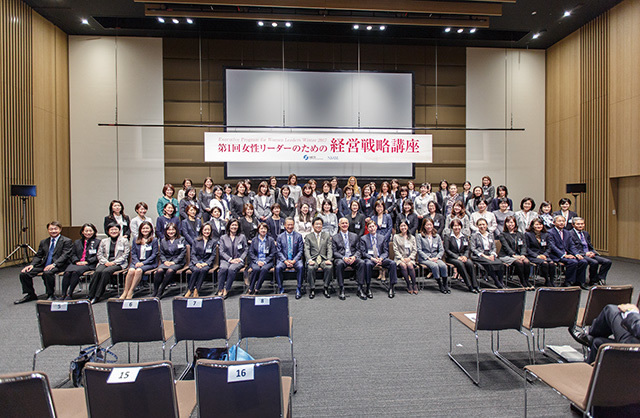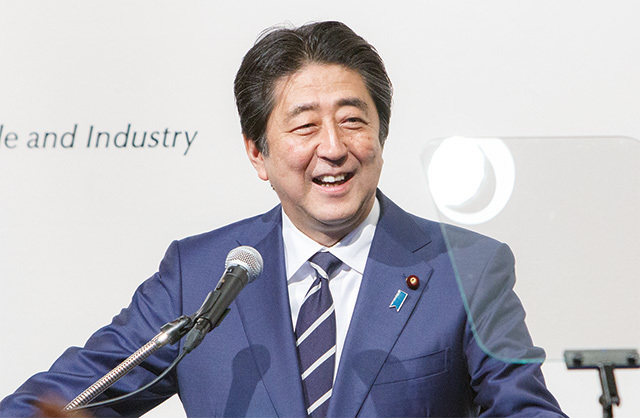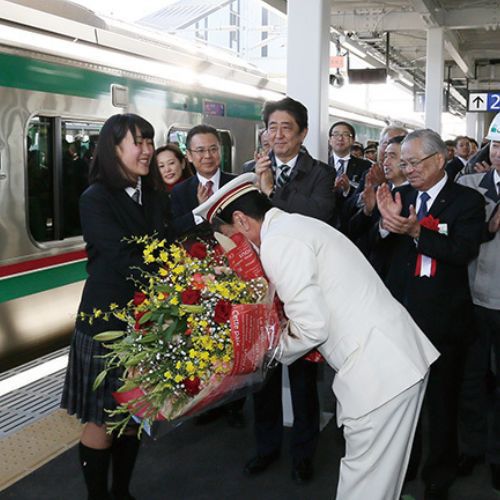Women’s labor force participation rate by age group
Changes in the labor force participation rate for Japanese women:
Until 1995, the rate for women aged 25–39 showed a pronounced dip, forming an M-shaped curve. Since 2011, the dip in the curve has become much less pronounced.
Source: Ministry of Internal Affairs and Communications.
The Japanese government has promoted various initiatives to increase the number of women in the workforce in line with its aim of realizing innovation and enhancing productivity through diversity. As a result, women’s advancement in Japanese society—traditionally thought to be male-dominated—has progressed. According to statistics from the Organization for Economic Cooperation and Development (OECD), the labor force participation rate for Japanese women aged 25–64 has reached 71.1%, surpassing the figure of 69.9% for the United States. But the glass ceiling that hinders women from rising to executive positions continues to be an issue in Japan, just as in many other countries.
Measures are now being taken to address this issue, with a focus on increasing the numbers of women in executive posts. As one step to foster the next generation of women leaders, the Japanese government collaborated with the private sector to hold the Executive Program for Women Leaders, which was conducted this January by professors from Harvard Business School (HBS). The participants were women in key managerial posts at companies actively seeking to promote women’s advancement. They underwent training in the strategic-thinking and decision-making skills required of executives and forged personal networks with each other through group discussions.
Miki Kotani, who holds a managerial position at Sekisui House, one of Japan’s major homebuilders, was a participant in the program. The majority of employees in the housing industry are male, and Kotani recalls, “When I joined the company 29 years ago, the managerial posts were largely held by men.” She has worked to remove the glass ceiling by fostering women managers with initiatives including the creation of in-house training programs and support systems to promote women’s active participation, along with steps to enhance awards systems. “The interaction and collaboration among the women in high-level managerial posts who participated in the HBS program will lead to changes in women’s social roles,” she expectantly declares.
Kotani speaks enthusiastically of her hope for a society in which women’s participation will expand even further: “I’ve been working for many years in construction technology development operations, and company reform is similar in some ways to the work of development. I’d like to make use of what I learned from the HBS program for the development of new measures that will lead to greater involvement of women.” Her bright gaze is focused on a future in which the women leaders who emerge from the HBS program will serve as role models for the empowerment of women throughout society.


























